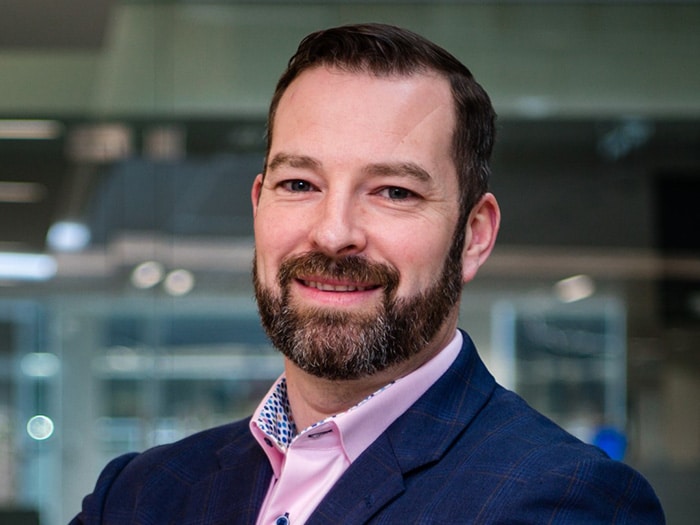
Op-Ed: Accelerating the adoption of energy-efficiency technologies
Written by
Garry Noonan, Ardmore Shipping's Director, Innovation
By Garry Noonan, Ardmore Shipping‘s Director, Innovation
A sustainable, achievable plan for successfully transitioning to shipping’s low carbon future requires recognizing the full scope of challenges and opportunities arising from the evolving energy landscape. This spans developing alternative fuels, implementing clean technologies, adopting innovative business models, and working in collaboration with customers who are themselves shifting towards a more environmentally friendly future.
Navigating the ever-evolving landscape of environmental regulations also poses formidable challenges for shipping companies. As regulatory bodies worldwide intensify their focus on sustainability, owners and operators find themselves grappling with the dual objectives of enhancing the efficiency of their fleets and managing escalating costs.
At a time when it’s hard for shipowners to make the big calls on their long-term fuel and propulsion choices, Ardmore is exploring more immediate avenues to invest in solutions that will increase fuel efficiency and lower emissions. Our roadmap for tracking and reporting our progress is our Energy Transition Plan.
On-route efficiency
Through Ardmore’s ETP, we are constantly identifying and assessing new and emerging technologies that can boost fleet-wide performance. For example, whilst we implemented twelve different initiatives in 2022, we assessed over 100 possibilities.
One of the key aspects of our approach is the use of energy-efficient technologies across our fleet. To date, we have invested in fuel-efficient engines, advanced hull designs, and other technologies that reduce fuel consumption and emissions.
This includes Manta Marine’s FuelOpt technology, which has been installed across our fleet. The system is designed to ease the technical burden of greener ship operations as it automates propulsion control, replacing the need for constant monitoring and manual adjustments. Through use of the system, our crew have full control of vessel speed, fuel consumption and/or engine power, and are therefore able to avoid potential over consumption of fuel in harsh conditions such as high swells and winds.
Variable speed drives are becoming standard in new builds, driven by evolving industry requirements. To optimize energy consumption, we are embracing this technology, which slows down pumps and fans based on demand. This “low-hanging fruit” in energy efficiency has shown promising results, with an average fuel saving of about one tonne per day.
As shipping embraces the AI evolution, our collaboration with DeepSea Technologies has seen the rollout of their AI-enabled voyage speed optimization tool across our fleet. This solution aims to automate the process of adjusting speed based on market dynamics, balancing the value of time and bunkers, resulting in smarter decision-making.
We are also focused on other sustainability solutions, such as the Value Maritime Filtree system. Functioning as a sulfur scrubber with a twist, it filters washwater to remove particulate matter and residues, ensuring responsible disposal. Additionally, the system is carbon capture-ready, aligning with our anticipation of future industry trends.
Streamlining when stationary
Optimizing the efficiency of vessels during stationary periods also presents opportunities for significant energy savings. Anchored or berthed ships often rely on auxiliary power sources, such as generators, to maintain essential systems. Efficient energy management during these idle phases not only reduces fuel consumption, but also minimizes emissions and operational costs.
To enhance efficiency during stationary periods, we have utilized low-load boiler optimization. By upgrading the boiler control and burner systems, energy loss is minimized during ignition cycles. Through this process we have seen a remarkable reduction in boiler turndown ratios—which now sit at 5% of the normal load, down from 20%.
Alfa Laval’s micro boiler solution is also a technology we have embraced. The solution harnesses waste heat from generators, supplementing the main boiler when vessels are stationary. This has resulted in substantial fuel savings—up to a tonne and a half per day. The challenge lies in the space constraints on vessels, but we managed to install one on each of our MRs during their planned docking periods.
From fouled to efficient
Reduction in biofouling can improve both fuel efficiency and operational performance, and Ardmore is experimenting with ultrasonic transducers to maintain propeller cleanliness. We are also trialing using this technology to improve our speed log accuracy in the long term, which contributes to more reliable data for our performance management system.
Exploring innovations from Seacoat, our vessels are also undergoing trials with non-toxic, durable, and smooth coatings. The aim here is to reduce fouling by creating a very smooth surface, reducing the adherence of marine life, while also ensuring easy cleaning without compromising coating integrity. Furthermore, the non-toxic nature of these solutions prevents fouling, without causing damage to marine life.
Embracing available technologies
From advanced propulsion systems and fuel-efficient engines to novel hull designs, a diverse selection of energy efficiency solutions has emerged in recent years, offering savings in some unexpected places. Efficiency solutions such as these will be crucial to meeting shipping’s decarbonization goals. We are making encouraging progress towards our Energy Transition Plan through an open mind to new ideas, and a rigorous approach to testing the right solutions for our fleet. As the energy transition progresses, Ardmore encourages our industry colleagues to look at how innovative technologies can help them achieve meaningful progress towards a low carbon future.




